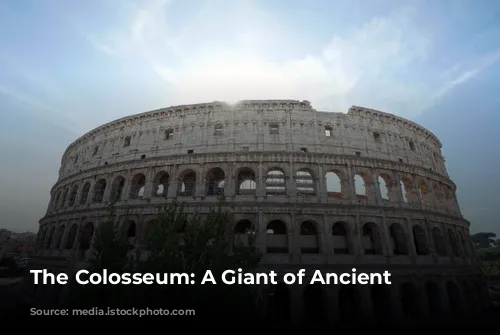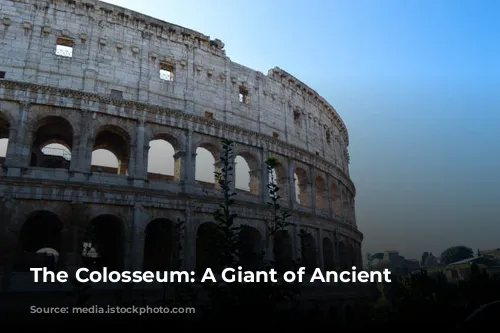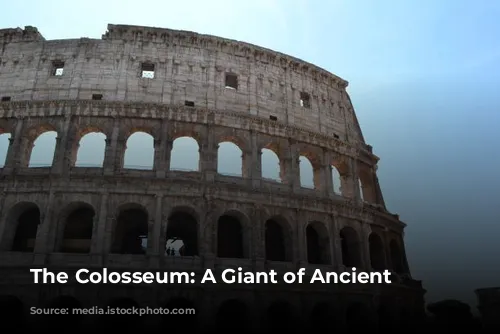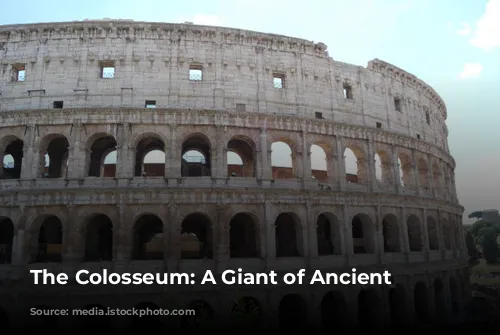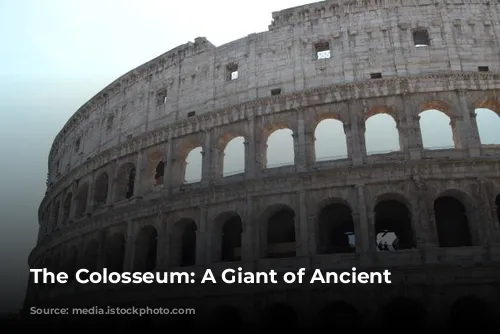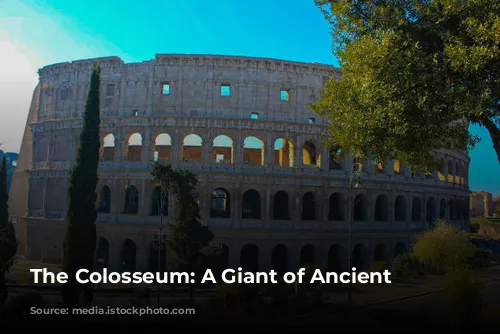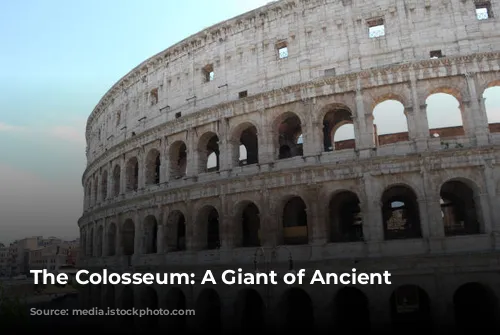The Colosseum, a name synonymous with ancient Rome, stands as a monumental testament to the empire’s power and grandeur. More than just a stadium, it is a symbol of Rome’s enduring legacy, a timeless reminder of the past.
A Monument to Imperial Power
The Flavian Amphitheatre, as it was officially known, was built by Emperor Vespasian of the Flavian dynasty and inaugurated by his son Titus in 80 AD. The opening ceremony, a spectacle of extravagance and grandeur, lasted for one hundred days, featuring thrilling gladiatorial combats, captivating animal hunts, and even naumachiae – staged sea battles that transported spectators to the heart of epic naval clashes.
The Colosseum’s name, however, has a fascinating origin, rooted in a medieval prophecy by the Venerable Bede: “Rome will exist as long as the Colosseum does; when the Colosseum falls so will Rome; when Rome falls so will the world.” The name likely derives from the colossal statue of Emperor Nero, standing near the amphitheatre, which has since disappeared.
A Masterpiece of Roman Engineering
The Colosseum’s imposing structure is a testament to the architectural prowess of the Roman engineers. Its elliptical shape, designed to maximize seating capacity, is a marvel of design, as is its intricate construction. The four tiers of arches, with the second and third adorned with impressive statues, provided a breathtaking view for spectators.
The construction of the Colosseum was a monumental feat, completed in less than a decade. The secret lay in the Romans’ mastery of the arch, a structural element that allowed them to distribute weight effectively and efficiently. The Colosseum, in essence, is a series of arches built upon each other, a testament to their ingenious design.
A Legacy of Time and Transformation
The Colosseum we see today is only a fragment of its former glory. Time and the passage of centuries have taken their toll, leaving behind a skeleton of the once magnificent arena. In the Middle Ages, the Colosseum was used as a quarry for building materials, with its marble, lead, and iron being plundered for the construction of prominent Roman structures like the Barberini Palace, Piazza Venezia, and St. Peter’s Basilica.
The holes still visible in the Colosseum’s columns are a chilling reminder of this era, scars left by the extraction of valuable materials.
A Glimpse into Roman Life
The Colosseum was more than just an arena for entertainment; it was a microcosm of Roman society. It could accommodate up to seventy thousand spectators, each finding their place based on their social status. The higher tiers were reserved for the common people, while the lower tiers were for the elite, with the front row reserved for senators, vestals, priests, and the emperor.
Just like modern stadiums, the Colosseum featured an ingenious roof covering, the velarium, a massive linen awning supported by ropes, winches, and wooden poles. This marvel of engineering required the coordinated efforts of one hundred sailors from the Imperial fleet to maneuver it, creating a symphony of motion against the backdrop of a roaring crowd.
The Gladiatorial Games: A Spectacle of Blood and Glory
The arena itself was a stage for a variety of shows, from bloody gladiatorial combats to spectacular hunts featuring exotic animals. The underground cellars housed elaborate machinery, including lifts and hoists, used to stage dramatic entrances and surprise effects, sending gladiators and animals soaring into the arena through trapdoors.
The gladiators, often former prisoners of war or paupers seeking fame and fortune, were the stars of the show. They trained at the Ludus Magnus, the Gladiators’ Barracks, and emerged into the arena to thunderous applause, much like modern-day sports heroes.
The gladiatorial battles were divided into various categories, with different types of gladiators, each wielding unique weapons and armor. The outcome of each fight was decided by the audience, who would urge the Emperor to grant mercy or pronounce judgment on the defeated gladiator.
A Lasting Legacy
The Colosseum was more than just a stage for entertainment; it was a reflection of Roman values, a platform for political control, and a source of public unity. It offered a distraction from the anxieties of daily life, a moment for citizens to come together and experience the thrill of shared spectacle.
The Colosseum’s legacy continues to resonate today, drawing millions of visitors from around the world. While the gladiatorial games are now just a faded memory, the Colosseum continues to captivate and inspire, standing as a testament to the grandeur and enduring power of ancient Rome.
